The Evolution of Cannabis Testing: From THC to THCA Understanding
For decades, cannabis testing operated in the dark, quite literally. Scientists and regulators believed they understood what they were measuring when they tested cannabis samples, but a critical blind spot existed in their methodology. The compound they thought they were detecting—delta-9-tetrahydrocannabinol (THC)—was actually being created by their testing process itself. This revelation would fundamentally transform our understanding of cannabis chemistry and reshape the entire industry.
The story of cannabis testing evolution is not merely a tale of technological advancement; it's a detective story where the evidence was inadvertently being destroyed before it could be properly examined. At the heart of this mystery lies tetrahydrocannabinolic acid (THCA), the non-intoxicating precursor to THC that exists abundantly in raw cannabis plants. Understanding how we went from completely missing this crucial compound to making it the centerpiece of modern cannabinoid testing methods history reveals the fascinating intersection of chemistry, regulation, and scientific humility.
Today's sophisticated THCA testing history began with a fundamental misunderstanding. Early researchers weren't looking for THCA because their testing methods converted it to THC before they could measure it. This inadvertent transformation led to decades of confusion about cannabis potency, effects, and the very nature of how cannabinoids exist in the living plant. The journey from this blind spot to today's precision testing represents one of the most significant developments in cannabis science.
Early Testing Methods: The Foundation of Cannabis Analysis
1960s-1970s Laboratory Techniques
The birth of systematic cannabis testing coincided with the identification of THC as the primary psychoactive compound in 1964 by Israeli scientist Dr. Raphael Mechoulam. This breakthrough sparked intense interest in quantifying THC levels, but the cannabis laboratory history of this era was marked by primitive techniques and limited understanding of the plant's full chemical complexity.
Early researchers employed rudimentary extraction methods, typically using organic solvents to pull cannabinoids from plant material. These extracts were then subjected to whatever analytical equipment was available in university and government laboratories. The challenge wasn't just technological—it was conceptual. Scientists were searching for THC because that's what they knew to look for, unaware that the living plant contained something quite different.
Thin Layer Chromatography: The First Separation Method
Thin layer chromatography (TLC) emerged as one of the earliest methods for separating and identifying cannabinoids. This technique involved applying a cannabis extract to a glass or metal plate coated with a thin layer of silica gel or similar material. As solvents moved up the plate by capillary action, different compounds would travel at different rates, creating distinct spots that could be visualized and compared.
While TLC was revolutionary for its time, it had significant limitations for THCA detection methods. The technique was qualitative rather than quantitative, providing identification but not precise measurements. More critically, the preparation and visualization processes often involved heat or acidic conditions that could trigger decarboxylation—the conversion of THCA to THC—without researchers realizing what was happening.
Gas Chromatography Beginnings: The Heat Problem Emerges
The introduction of gas chromatography (GC) in the 1970s represented a major leap forward in analytical chemistry. GC offered the promise of both separating compounds and quantifying them with far greater precision than TLC. The technique worked by vaporizing a sample and passing it through a long column where different molecules would separate based on their physical and chemical properties.
For cannabis analysis, gas chromatography seemed ideal. It was sensitive, reproducible, and could detect cannabinoids at low concentrations. Laboratories quickly adopted GC as the gold standard for cannabis testing evolution, and it dominated the field for decades. However, this widespread adoption cemented a fundamental error into the testing paradigm.
Why THCA Was Often Missed
The critical flaw in gas chromatography for cannabis testing lies in the "gas" part of the name. To analyze a sample via GC, it must be vaporized in an injection port heated to temperatures typically between 200-300°C (392-572°F). At these temperatures, THCA doesn't just vaporize—it instantly decarboxylates into THC. The acidic cannabinoid loses its carboxyl group (COOH) and transforms into the neutral, psychoactive form.
Early researchers had no reason to suspect this was happening. When they injected cannabis extracts into their GC systems, they saw clear THC peaks in their results. They assumed they were measuring THC that existed in the plant, not realizing they were creating it through their testing methodology. This meant that for years, lab testing THCA discovery was impossible—not because THCA didn't exist, but because the testing process itself was destroying the evidence.
The situation was analogous to trying to measure the temperature of water by dipping a hot thermometer into it—the measuring device itself changed what was being measured. This methodological blind spot would persist until researchers began to question their assumptions about what cannabinoids actually existed in raw cannabis plants.
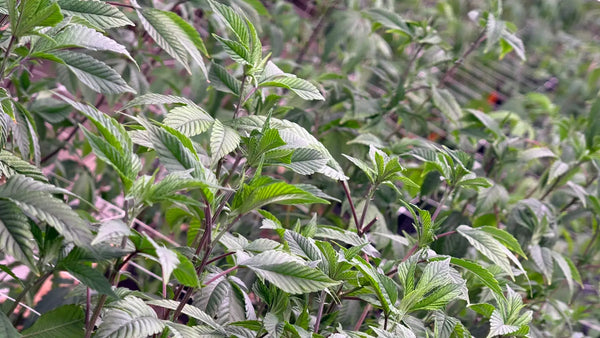
The Decarboxylation Problem: Unraveling the Testing Mystery
How Heat from Testing Converted THCA to THC
The decarboxylation testing problem represented one of the most significant oversights in early cannabis science. Decarboxylation is a chemical reaction where a carboxyl group (COOH) is removed from a molecule, releasing carbon dioxide (CO₂) in the process. For THCA, this transformation converts a non-intoxicating acidic cannabinoid with a molecular weight of 358.5 g/mol into psychoactive THC with a molecular weight of 314.5 g/mol.
This reaction occurs naturally when cannabis is smoked, vaporized, or cooked—it's why raw cannabis doesn't produce intoxicating effects when consumed. The heat applied during consumption triggers the transformation. However, when gas chromatography became the standard testing method, laboratories were unknowingly applying the same heat-based transformation to their samples before measurement.
The injection port of a gas chromatograph, maintained at high temperatures to instantly vaporize samples, created the perfect conditions for complete and rapid decarboxylation. Within milliseconds of injection, any THCA present would convert to THC. The chromatogram would show a THC peak, the laboratory would report THC concentration, and everyone believed they were measuring what existed in the plant.
Confusion in Early Results
This methodological error created numerous puzzles that researchers couldn't initially explain. Freshly harvested cannabis tested similarly to properly cured material, even though anecdotal evidence suggested differences in potency and effects. Samples that had been stored for years showed minimal degradation in "THC" levels, contradicting expectations about cannabinoid stability. Raw cannabis juice and fresh plant material tested positive for high THC levels, yet consuming these materials raw produced no intoxicating effects.
The cannabis chromatography evolution was complicated by these inconsistencies, but they were often dismissed as anomalies or attributed to other factors. The paradigm of GC testing was so deeply entrenched that few questioned whether the methodology itself might be flawed.
Some researchers noted that their results didn't align with user experiences or the plant's pharmacology, but connecting these observations to a systemic testing error took time. The scientific literature slowly accumulated hints that something was amiss—references to "THC acid" appeared sporadically, and some studies noted differences between heated and unheated samples—but these clues weren't synthesized into a coherent critique of testing methods.
Realizing the Testing Methodology Error
The breakthrough in understanding came from multiple directions. Biochemists studying cannabinoid biosynthesis in living plants began to recognize that the plant produces acidic cannabinoids through enzyme-catalyzed reactions. THCA, CBDA (cannabidiolic acid), and other acidic forms were the actual products of the plant's metabolism, not their neutral counterparts.
This biological insight created a stark contradiction with testing results. If plants produced THCA, why were laboratories only finding THC? The answer became clear when researchers conducted experiments comparing heated and unheated extraction and analysis methods. When samples were processed and analyzed at room temperature or with minimal heat exposure, a different picture emerged—one dominated by acidic cannabinoids rather than neutral ones.
The realization that gas chromatography was creating the very compound it was supposed to measure represented a paradigm shift in THCA vs THC testing. It meant that decades of potency data needed reinterpretation, that regulatory standards were based on a fundamental misunderstanding, and that a new testing methodology was urgently needed.
Development of THCA-Specific Testing: The HPLC Revolution
High-Performance Liquid Chromatography (HPLC)
The solution to the decarboxylation problem came in the form of high-performance liquid chromatography (HPLC), a technique that had been developing alongside gas chromatography but hadn't been widely applied to cannabis testing. Unlike GC, which vaporizes samples, HPLC THCA testing keeps samples in liquid form throughout the analysis, eliminating the need for high-temperature injection.
HPLC works by pumping a liquid mobile phase (usually a mixture of water and organic solvents) through a column packed with a solid stationary phase. The sample, dissolved in a compatible solvent, is injected into this flowing stream. As the mobile phase carries the sample through the column, different compounds interact differently with the stationary phase, causing them to separate. A detector at the column's exit measures each compound as it emerges.
The key advantage for cannabinoid analysis is that HPLC operates at or near room temperature. There's no injection port heated to 200-300°C, no instant vaporization, and consequently no thermal decarboxylation. This means acidic cannabinoids like THCA remain stable throughout the analysis, allowing them to be detected and quantified separately from their neutral counterparts.
Room Temperature Testing Protocols
Implementing accurate THCA testing required more than just switching from GC to HPLC. Entire protocols needed to be redesigned to preserve acidic cannabinoids from the moment of sampling through final analysis. This meant paying attention to every step of the process where heat or other degrading factors could intrude.
Sample preparation became more delicate. Instead of aggressive heating to drive extraction, laboratories adopted gentler methods using room-temperature or slightly warmed solvents. Some protocols specified cold extraction, storing samples and solvents in refrigerators to minimize any thermal degradation. The goal was to create a "cold chain" similar to those used in food safety, maintaining low temperatures throughout handling and processing.
Storage conditions also received new scrutiny. Samples needed to be protected from light, heat, and oxygen—factors that could all trigger decarboxylation or other forms of cannabinoid degradation. Laboratories implemented new storage protocols using amber glass containers, refrigeration or freezing, and inert atmospheres to preserve sample integrity between collection and analysis.
Preserving Acidic Cannabinoids
The shift to THCA testing development required laboratories to develop expertise in handling delicate acidic compounds. THCA and other acidic cannabinoids are more reactive than their neutral counterparts, susceptible to decarboxylation under conditions that wouldn't affect THC or CBD. This meant that techniques considered standard in other analytical chemistry applications needed to be modified for cannabis testing.
Solvent selection became critical. Some common extraction solvents, particularly those with acidic or basic properties, could promote decarboxylation. Laboratories experimented with various solvent systems to find combinations that efficiently extracted cannabinoids while minimizing degradation. Ethanol, methanol, and certain mixed solvent systems proved effective when used at appropriate temperatures.
The development of reference standards specifically for acidic cannabinoids created another challenge. Unlike THC and CBD, which had been available as analytical standards for years, THCA standards were harder to obtain and less stable. Manufacturers had to develop methods for producing, purifying, and stabilizing THCA in forms that could serve as reliable calibration standards. The purity and stability of these standards directly affected the accuracy of testing results.
Modern Testing Standards
As cannabinoid testing standards history evolved, organizations began developing comprehensive guidelines for HPLC-based cannabinoid analysis. These standards addressed everything from equipment specifications and maintenance to detailed analytical procedures and quality control requirements.
Modern cannabinoid testing methods typically employ ultra-high-performance liquid chromatography (UHPLC), an advanced variant of HPLC that uses smaller particle sizes in the column packing and higher pressures to achieve better separation and faster analysis. UHPLC can resolve THCA, Δ9-THC, Δ8-THC, CBD, CBDA, and numerous other cannabinoids in a single run, providing a comprehensive cannabinoid profile in minutes.
Detector technology has also advanced significantly. While early HPLC systems used UV detectors that measured light absorption at specific wavelengths, modern systems often incorporate diode array detectors (DAD) that can simultaneously monitor multiple wavelengths, or mass spectrometry (MS) detectors that provide additional molecular identification capabilities. These advanced detection methods enhance both sensitivity and specificity, allowing laboratories to detect cannabinoids at lower concentrations and distinguish between similar compounds more reliably.
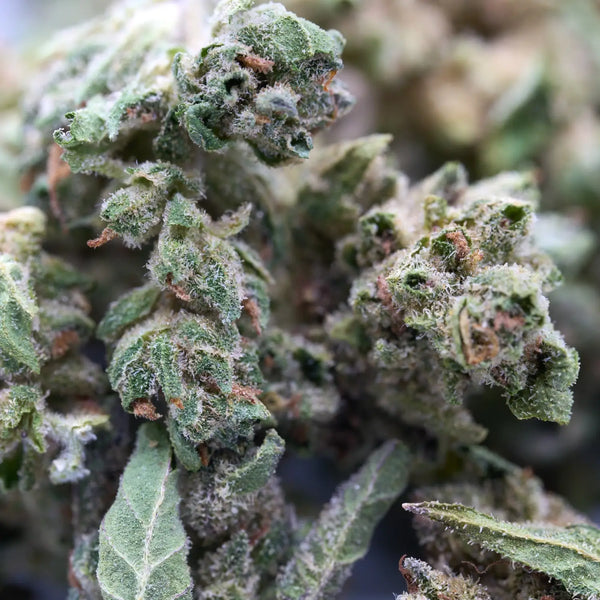
Regulatory Evolution: From Confusion to Standardization
State Testing Requirements
The total THC calculation history reveals a patchwork of state-by-state approaches as cannabis legalization spread across the United States. Early medical cannabis states like California and Colorado developed testing requirements based on available knowledge and technology at the time, often specifying gas chromatography methods that measured total THC (without distinguishing THCA).
As understanding of the THCA-THC relationship grew, states began updating their testing requirements. Some mandated HPLC testing to provide separate measurements of THCA and THC. Others specified that laboratories must report both individual cannabinoid concentrations and calculated total potential THC. This variation created challenges for multi-state operators and consumers trying to compare products across state lines.
The transition wasn't always smooth. Switching from GC to HPLC often revealed that products had lower neutral THC content than previously reported, but higher total cannabinoid content when acidic forms were included. This led to confusion in the market and occasional disputes about labeling and potency claims. Some producers found that their products, which had previously tested at certain THC levels via GC, now showed different profiles when tested via HPLC.
Total THC Calculations (THCA + THC)
The concept of "total THC" emerged as a way to standardize potency reporting despite the methodological differences between testing approaches. The calculation recognizes that THCA will convert to THC when heated during consumption, so the total potential intoxicating cannabinoid content should account for both forms.
The standard formula for total THC is: Total THC = THC + (THCA × 0.877)
The 0.877 factor accounts for the molecular weight difference between THCA and THC. When THCA loses its carboxyl group during decarboxylation, it loses approximately 12.3% of its molecular weight. Therefore, 1 gram of THCA will produce approximately 0.877 grams of THC. This conversion factor has been incorporated into testing standards and regulatory definitions across most jurisdictions.
This calculation proved crucial for hemp regulation. The 2018 Farm Bill legalized hemp defined as cannabis with less than 0.3% delta-9-THC on a dry weight basis. However, hemp plants naturally contain THCA, which wasn't addressed in the initial definition. The total THC calculation became essential for determining whether a plant qualified as legal hemp or regulated cannabis—a distinction with significant legal and economic implications.
Federal Testing Protocols
At the federal level, the cannabis testing technology timeline followed a slower but increasingly important trajectory. The Drug Enforcement Administration (DEA) and the United States Department of Agriculture (USDA) developed testing protocols for hemp compliance, specifying that testing must measure total THC (including the THCA conversion) using post-decarboxylation testing methods or validated HPLC methods with conversion calculations.
These federal protocols prioritized consistency and reliability over speed or cost. Approved testing laboratories must meet stringent accreditation requirements, maintain validated testing methods, and participate in proficiency testing programs. The emphasis on standardization aims to prevent situations where the same plant sample might test as legal hemp in one laboratory and illegal cannabis in another.
Federal guidance has also addressed sampling protocols, recognizing that cannabinoid distribution isn't uniform throughout a cannabis plant. Flower material typically contains higher concentrations than leaves or stems, and concentrations can vary between different flowering sites on the same plant. Proper sampling methodology—collecting representative samples from multiple locations on plants selected randomly from a field or batch—helps ensure testing results accurately reflect the material being evaluated.
Industry Standardization
Beyond government regulation, industry organizations have contributed to standardizing cannabis testing practices. ASTM International (formerly the American Society for Testing and Materials) has developed numerous standards specific to cannabis and hemp testing, covering everything from sample preparation and analysis methods to quality assurance and proficiency testing.
These voluntary consensus standards provide detailed technical guidance that goes beyond basic regulatory requirements. They address issues like measurement uncertainty, method validation parameters, quality control procedures, and reporting formats. Laboratories seeking accreditation typically must demonstrate compliance with these standards in addition to meeting regulatory requirements.
The creation of cannabinoid reference materials with certified concentrations has also supported standardization efforts. Organizations like the National Institute of Standards and Technology (NIST) have developed and certified cannabis reference materials that laboratories can use to validate their methods and calibrate their instruments, ensuring consistency across different testing facilities.
Modern Testing Technology: Current Methods and Accuracy
Today's cannabis testing laboratories bear little resemblance to their 1960s counterparts. Modern facilities are equipped with sophisticated analytical instrumentation, operate under strict quality management systems, and employ trained personnel with specialized expertise in cannabinoid analysis. The field has matured from experimental curiosity to professional analytical service, with testing results carrying significant regulatory and commercial weight.
Contemporary THCA testing development relies primarily on UHPLC systems coupled with diode array detectors or mass spectrometers. These instruments can detect and quantify cannabinoids at parts-per-million or even parts-per-billion concentrations, providing detailed cannabinoid profiles that include major compounds like THCA, THC, CBD, and CBDA, as well as minor cannabinoids like CBG, CBC, CBN, and their acidic precursors.
Sample preparation has become increasingly sophisticated and automated. Modern laboratories use techniques like solid-phase extraction, QuEChERS (Quick, Easy, Cheap, Effective, Rugged, and Safe) methods, and automated liquid handling systems to process samples efficiently while maintaining accuracy. These methods minimize handling errors and improve reproducibility across multiple samples and analysts.
Quality assurance protocols now include comprehensive measures to ensure result reliability. This includes analyzing certified reference materials with each batch, using internal standards to monitor extraction efficiency and instrument performance, participating in interlaboratory comparison studies, and maintaining detailed documentation of all procedures and results. Many testing laboratories also maintain ISO/IEC 17025 accreditation, demonstrating their competence in following standardized testing procedures.
The accuracy of modern THCA testing typically falls within ±10-15% relative uncertainty, a significant improvement over early methods. This uncertainty reflects the cumulative effects of sampling variability, extraction efficiency, instrumental precision, and calibration accuracy. While there's always room for improvement, current methods provide sufficient accuracy for regulatory compliance testing, product labeling, and quality control.
Future of Testing: Emerging Technologies and Possibilities
The future of cannabis testing evolution promises even greater speed, accuracy, and comprehensiveness. Several emerging technologies show potential for transforming how we analyze cannabis and hemp products.
Portable Testing Devices: Miniaturized analytical systems could bring laboratory-quality testing to production facilities, dispensaries, and even consumer settings. Technologies like miniature mass spectrometers, portable near-infrared spectrometers, and lab-on-a-chip devices are under development. These could enable real-time testing during cultivation and processing, providing immediate feedback for quality control and harvest timing decisions.
Non-Destructive Testing: Current testing methods require destroying samples, preventing the tested material from being sold. Spectroscopic methods like near-infrared (NIR) or Raman spectroscopy could potentially analyze cannabinoid content through packaging or in intact plants without requiring sample destruction. While these methods currently lack the accuracy of HPLC, ongoing research is improving their reliability.
Comprehensive Metabolomics: Rather than targeting known cannabinoids, advanced analytical methods could provide complete chemical profiles of cannabis samples, detecting hundreds or thousands of compounds simultaneously. This could reveal previously unknown cannabinoids, terpenes, flavonoids, and other phytochemicals, expanding our understanding of the plant's chemical diversity and the "entourage effect" that results from interactions between multiple compounds.
Artificial Intelligence and Machine Learning: AI systems could analyze cannabinoid profiles to predict effects, identify optimal harvest times, detect adulteration or contamination, and even suggest optimal consumption methods for specific therapeutic goals. Machine learning algorithms trained on extensive databases of chemical profiles and effects could provide insights that human analysts might miss.
Blockchain and Sample Tracking: Distributed ledger technologies could create tamper-proof chains of custody for samples from field to laboratory to consumer, ensuring result integrity and preventing fraud. This could be particularly valuable in regulatory contexts where testing results determine legal compliance and market access.
Real-Time Cultivation Monitoring: Sensors placed in growing facilities could continuously monitor cannabinoid development in living plants, allowing cultivators to optimize environmental conditions and determine ideal harvest timing with unprecedented precision. This could improve both yield and cannabinoid content while reducing waste from premature or delayed harvesting.
These technological advances will likely continue the trend toward greater precision and specificity in accurate THCA testing, while also making testing faster, cheaper, and more accessible. As methods improve, our understanding of cannabis chemistry will deepen, potentially revealing new therapeutic compounds and applications.

Conclusion: From Blind Spots to Precision
The journey from gas chromatography's unintentional destruction of THCA to today's sophisticated HPLC analysis represents more than technological progress—it illustrates the importance of questioning assumptions and remaining humble in scientific inquiry. For decades, researchers and regulators operated under a fundamental misunderstanding about the form in which cannabinoids exist in living cannabis plants. This blind spot shaped drug policy, influenced breeding programs, and affected how millions of people understood and consumed cannabis.
The recognition that THCA testing history required completely rethinking testing methodology sparked a cascade of changes. New analytical techniques were developed and validated. Regulatory frameworks were updated to reflect accurate chemistry. The cannabis industry adapted to new testing standards and potency calculations. Consumers gained access to more accurate and informative product labeling.
Today, anyone can purchase THCA hemp flower with confidence in its tested cannabinoid content, something that would have been impossible in the early days of cannabis testing. Modern laboratory certificates of analysis provide detailed breakdowns of acidic and neutral cannabinoids, terpenes, and potential contaminants, empowering consumers to make informed choices.
Yet the story isn't finished. As technology continues advancing and our understanding deepens, we'll likely discover that our current methods, sophisticated as they are, still have blind spots. Perhaps we're missing minor cannabinoids with significant effects. Maybe interactions between cannabinoids and other plant compounds are more complex than current models suggest. The history of cannabinoid testing methods history teaches us to remain curious, question our methods, and stay open to discoveries that challenge what we think we know.
The evolution from crude 1960s techniques to today's precision instrumentation demonstrates how scientific progress depends on recognizing and correcting errors. Each generation of researchers built on previous knowledge while questioning inherited assumptions. This iterative process of discovery, mistake recognition, and refinement has given us testing capabilities that would have seemed like science fiction fifty years ago.
As cannabis and hemp industries continue expanding globally, reliable testing becomes increasingly crucial for consumer safety, regulatory compliance, and market transparency. The foundation laid by pioneers who identified the decarboxylation problem and developed HPLC testing protocols enables this growth. Their work transformed cannabis testing from guesswork into science, from blind spots into precision, and from confusion into understanding.
Frequently Asked Questions About THCA and Cannabis Testing
What is the difference between THCA and THC?
THCA (tetrahydrocannabinolic acid) is the non-intoxicating acidic precursor to THC found naturally in raw cannabis plants. It contains a carboxyl group (COOH) that makes it unable to bind effectively to CB1 receptors in the brain. THC (delta-9-tetrahydrocannabinol) is the psychoactive compound created when THCA loses its carboxyl group through heating or aging. While THCA won't produce intoxicating effects when consumed raw, it converts to THC when smoked, vaporized, or cooked.
Why does cannabis testing distinguish between THCA and THC?
Distinguishing between THCA and THC provides crucial information about cannabis products. Fresh or properly stored cannabis contains mostly THCA with minimal THC. Aged, improperly stored, or previously heated cannabis shows higher THC and lower THCA. This distinction helps determine product freshness, predict potency after consumption, ensure regulatory compliance (especially for hemp products), and understand how processing and storage affect cannabinoid profiles.
How did early testing methods miss THCA?
Early gas chromatography testing used injection ports heated to 200-300°C to vaporize samples. At these temperatures, THCA instantly decarboxylated into THC before it could be measured. Researchers didn't realize they were creating THC through their testing process—they thought they were measuring THC that existed in the plant. This methodological blind spot persisted for decades until HPLC testing revealed the true cannabinoid profiles of raw cannabis.
What is the total THC calculation and why is it important?
Total THC represents the maximum possible intoxicating cannabinoid content after all THCA converts to THC through heating. The calculation is: Total THC = THC + (THCA × 0.877). The 0.877 conversion factor accounts for the molecular weight lost when THCA decarboxylates. This calculation is critical for regulatory compliance, particularly for hemp products, which must contain less than 0.3% delta-9-THC. It's also important for consumers to understand the actual potency they'll experience when smoking or vaporizing cannabis.
Can THCA decarboxylate without heat?
Yes, THCA gradually decarboxylates over time even at room temperature, though the process is much slower than heat-induced conversion. Light exposure, oxygen, improper storage, and age all contribute to natural decarboxylation. This is why old cannabis often contains higher THC and lower THCA than fresh material. Proper storage in cool, dark, airtight containers slows this process but doesn't stop it completely. This natural conversion is why testing results can change over time and why production dates matter for cannabis products.
What makes HPLC better than gas chromatography for cannabis testing?
HPLC (high-performance liquid chromatography) keeps samples in liquid form at room temperature throughout analysis, preventing thermal decarboxylation. This allows laboratories to measure THCA and THC separately and accurately. Gas chromatography requires heating samples to 200-300°C for vaporization, instantly converting all THCA to THC. HPLC provides true cannabinoid profiles showing what actually exists in the product, while GC shows what would exist after extreme heating.
How accurate is modern THCA testing?
Modern HPLC testing typically achieves accuracy within ±10-15% relative uncertainty. This accounts for sampling variability, extraction efficiency, instrumental precision, and calibration accuracy. Accredited laboratories follow standardized methods, use certified reference materials, implement quality control procedures, and participate in proficiency testing to ensure reliability. While perfect accuracy is impossible in any analytical chemistry application, current THCA testing methods are sufficiently accurate for regulatory compliance and consumer information.
Why do some states have different testing requirements?
Cannabis testing requirements evolved independently as states legalized medical and recreational use at different times. States developed regulations based on available knowledge and technology when their programs launched, leading to variations in testing methods, reporting requirements, and potency limits. As scientific understanding improved, some states updated their standards while others retained older approaches. This creates challenges for multi-state operators and consumers comparing products across state lines, though ongoing standardization efforts are gradually reducing these inconsistencies.
Is THCA legal under federal hemp laws?
This remains a complex legal area. The 2018 Farm Bill legalized hemp defined as cannabis with less than 0.3% delta-9-THC. The definition focuses on delta-9-THC specifically, not total THC or THCA. However, USDA regulations require testing for total THC (including converted THCA), which must be below 0.3% for the plant to qualify as legal hemp. Some argue that high-THCA hemp flower with low delta-9-THC meets the letter of the law, while others contend the spirit of the law considers total potential intoxicating cannabinoids. Legal interpretations vary by jurisdiction.
Can you test cannabis without sending it to a laboratory?
Consumer-grade portable testing devices exist, but they're generally less accurate than laboratory HPLC testing. Options include colorimetric tests (change color based on cannabinoid presence), thin-layer chromatography kits (provide rough estimates), and portable spectrometers (use light analysis to estimate cannabinoid content). While these can provide quick estimates for personal use, they lack the precision necessary for regulatory compliance or commercial product labeling. For accurate potency testing, professional laboratory analysis remains the gold standard.
How does storage affect THCA levels?
THCA gradually converts to THC during storage through natural decarboxylation, a process accelerated by heat, light, and oxygen exposure. Proper storage in airtight containers, away from light, at cool temperatures (ideally refrigerated or frozen) significantly slows degradation. Even under optimal conditions, some conversion occurs over time. This is why THCA hemp flower is freshest soon after harvest and why test results can become outdated. Vacuum sealing, nitrogen flushing, and refrigeration help preserve THCA content in long-term storage.
What other cannabinoids exist in acidic forms?
Most cannabinoids exist primarily in acidic forms in living cannabis plants. Besides THCA, common acidic cannabinoids include CBDA (cannabidiolic acid, precursor to CBD), CBGA (cannabigerolic acid, the "mother cannabinoid" from which others derive), CBCA (cannabichromenic acid), and THCVA (tetrahydrocannabivarinic acid). These acidic forms have their own potential therapeutic properties distinct from their neutral counterparts. Modern HPLC testing can measure these acidic cannabinoids separately, providing comprehensive cannabinoid profiles that reveal the full chemical complexity of cannabis products.

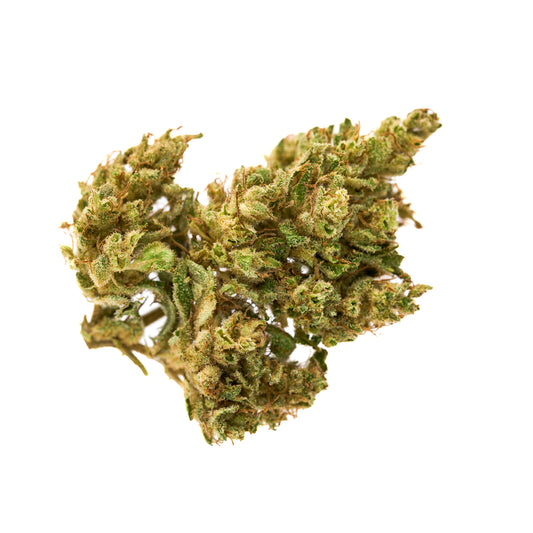
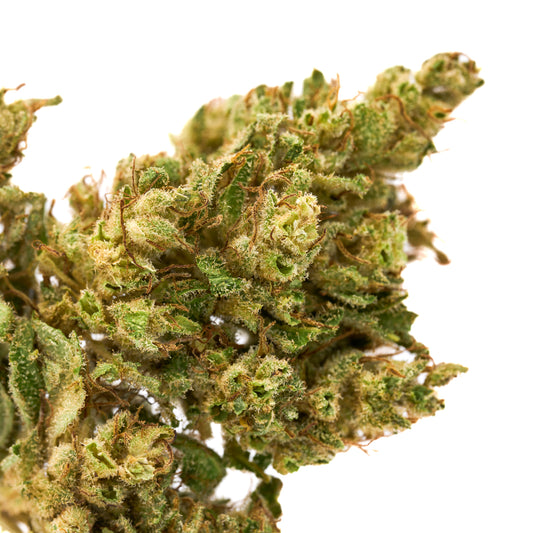
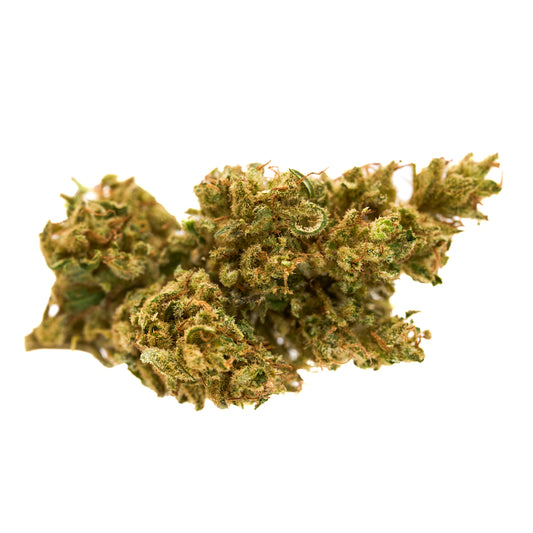
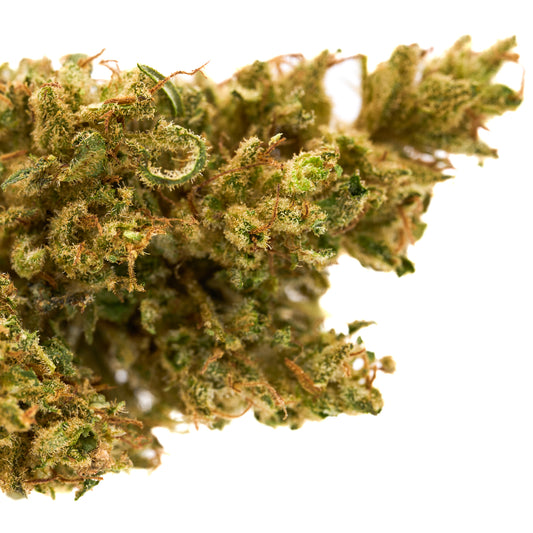
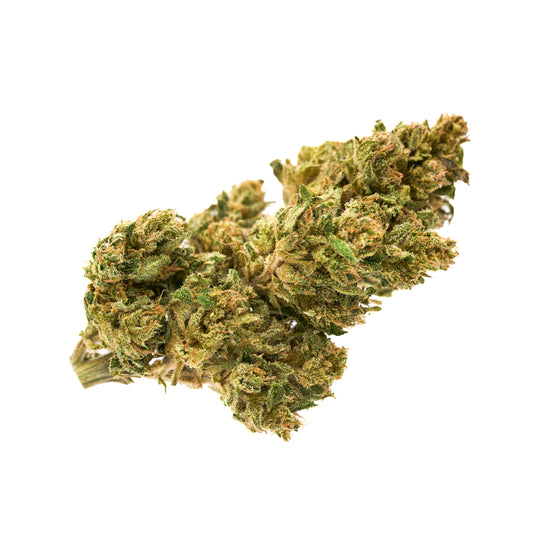
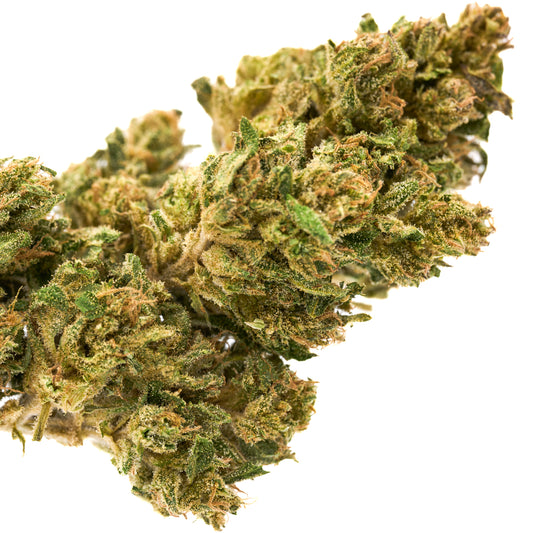



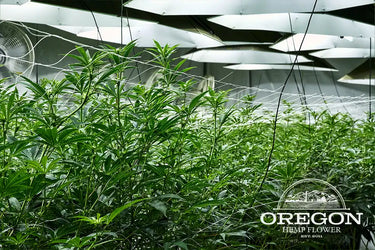

Leave a comment
Please note, comments need to be approved before they are published.